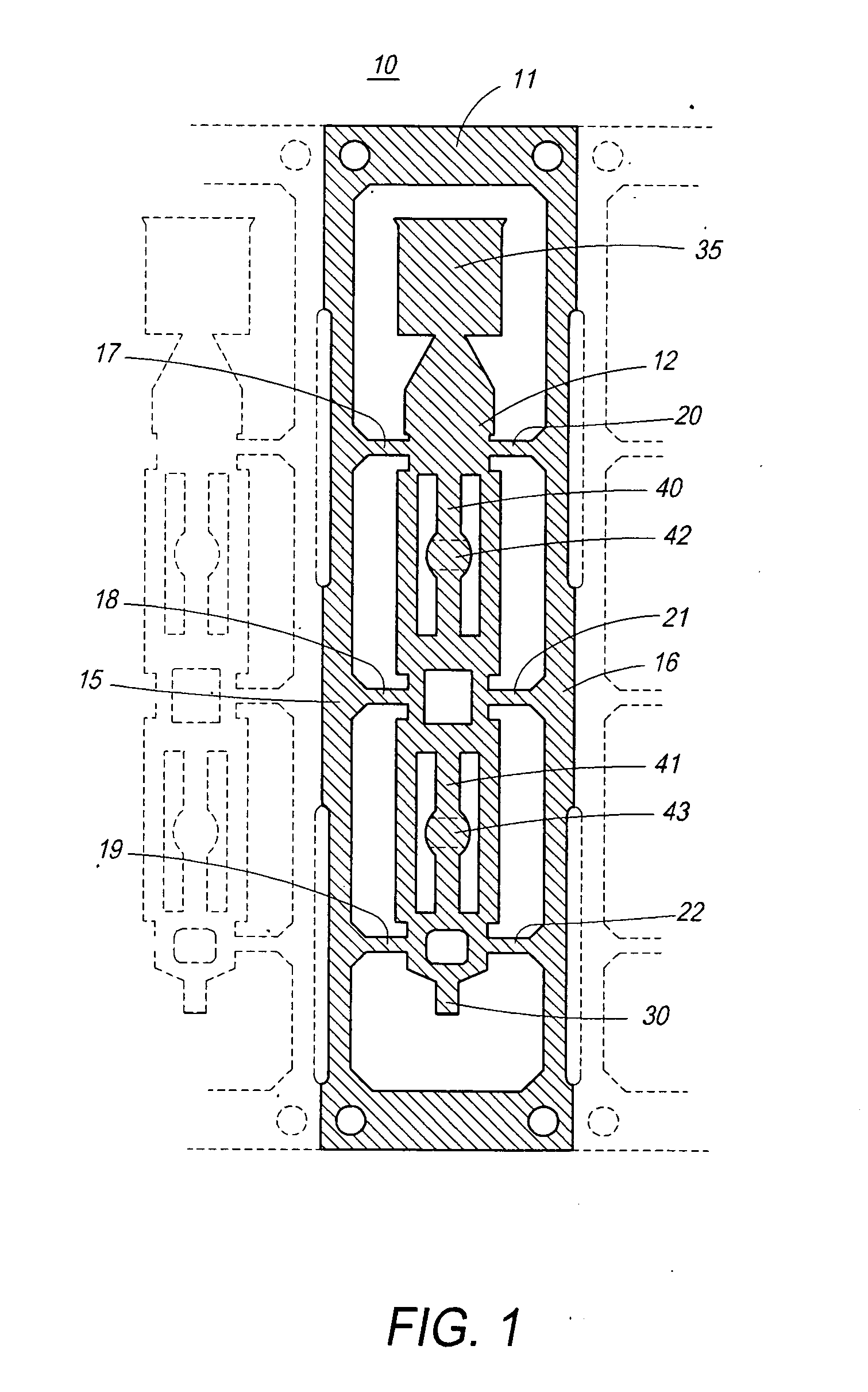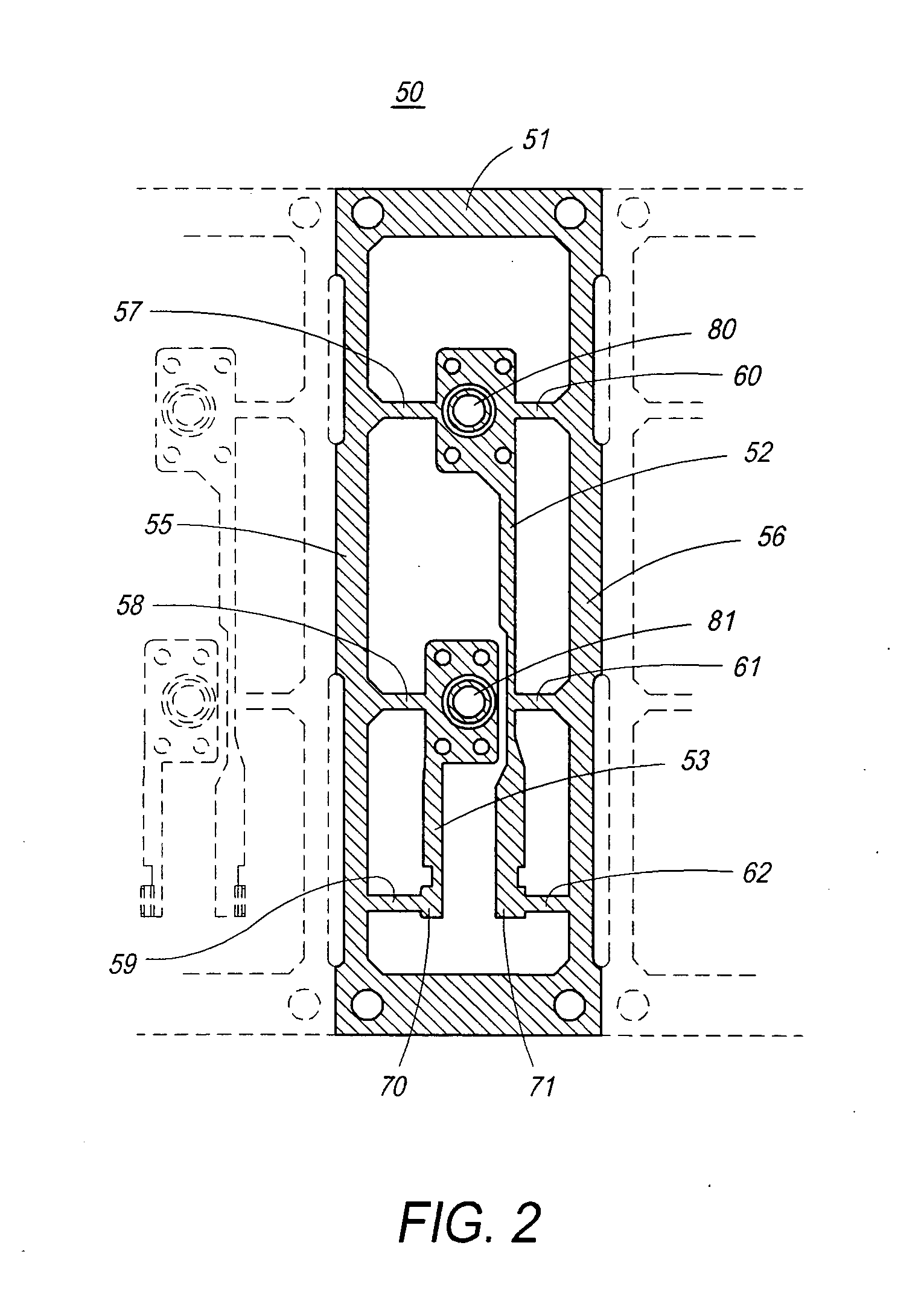Electrosurgical pencil switch,circuitry, and method of assembly
a pencil switch and electrical technology, applied in the field of electrical surgical pencil switch, circuitry, and assembly method, can solve the problems of increasing costs, slow work by humans, and inability to group switches or switch components, and achieve the effects of low cost, easy assembly, and high quality
- Summary
- Abstract
- Description
- Claims
- Application Information
AI Technical Summary
Benefits of technology
Problems solved by technology
Method used
Image
Examples
first preferred embodiment
[0108]Referring initially to FIG. 1, a first embodiment of an electrical circuit First Frame of the Switch of the present invention is shown in top down, plan view. In FIG. 1, First Frame 10 of the present invention is comprised of a unitary piece, formed from a blank sheet of conductive metal by stamping. The single sheet may be in the form of a reel of electrically conductive material. Portion 11 of frame 10, presented in cross-hatched rendering, is intended to be encased in an insulated Cabinet body (not shown). The metal sheet from which frame 10 is stamped is thick enough and conductive enough to carry current sufficient to cut, coagulate, ablate, excise, cauterize, or seal tissues by application of electric current to biological tissue through an active electrode (not shown). Frame 10, once stamped, forms a first conducting strip 12, which provides an electrical connection between two or more additional conducting strips stamped from a Second Frame (shown in FIG. 2), to thereb...
second preferred embodiment
[0137]Turning now to FIG. 16, a second embodiment of an electrical circuit First Frame and molded Cabinet Top 590 of the Switch of the present invention is shown. In this second embodiment a First Frame 590 is, like the First Frame 10 of the first embodiment (FIG. 1), comprised of a unitary piece, formed from a blank sheet of conductive metal by stamping. Again, First Frame 590 may be formed from a single sheet, or a reel of electrically conductive material as shown in FIG. 1, and explained in the text which accompanies FIG. 1. FIG. 16 shows the molded Cabinet Top 590 of the Switch of the present invention in bottom up, plan view. Specifically, molded Cabinet Top 590 is shown prior to cutting through Frame Isthmus 517, 518, 519, 520, 521, and 522 to separate (and discard) exterior portions 515 and 516 from First frame 510. The Cabinet top molded base 591 (non-conductive exterior) is formed as a single piece, with conductive elements (the metal frame 510 of FIG. 16) embedded within. ...
PUM
| Property | Measurement | Unit |
|---|---|---|
| length | aaaaa | aaaaa |
| electrically conductive | aaaaa | aaaaa |
| length | aaaaa | aaaaa |
Abstract
Description
Claims
Application Information
 Login to View More
Login to View More - R&D
- Intellectual Property
- Life Sciences
- Materials
- Tech Scout
- Unparalleled Data Quality
- Higher Quality Content
- 60% Fewer Hallucinations
Browse by: Latest US Patents, China's latest patents, Technical Efficacy Thesaurus, Application Domain, Technology Topic, Popular Technical Reports.
© 2025 PatSnap. All rights reserved.Legal|Privacy policy|Modern Slavery Act Transparency Statement|Sitemap|About US| Contact US: help@patsnap.com



